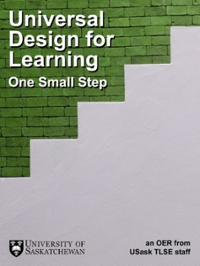Universal Design for Learning (UDL) is an educational framework designed to accommodate the diverse needs of all learners. Developed by CAST (Center for Applied Special Technology), UDL aims to create flexible learning environments that can adapt to various learning differences and abilities. The framework is built on three core principles:
UDL Principles:
1. Provide multiple means of engagement
2. Provide multiple means of representation
3. Provide multiple means of action and expression
By integrating these principles, UDL helps remove barriers to learning and supports the success of all students, including those with disabilities, and those who are neurodivergent.
Learn more: Centre College, Cornell University, and University of Oregon.
Why use UDL?
Implementing UDL in higher education offers several benefits:
1. Inclusivity and Equity: UDL promotes an inclusive learning environment by proactively planning for learner variability, ensuring that all students, regardless of their abilities or backgrounds, have equal opportunities to succeed.
2. Flexibility: By providing multiple ways to access content, engage with the material, and demonstrate learning, UDL accommodates different learning styles and needs. This flexibility not only benefits students with specific needs but enhances the learning experience for everyone.
3. Efficiency: Designing courses with UDL principles can save time and effort in the long run. Instead of retrofitting materials and assessments to accommodate individual needs, UDL anticipates and addresses these needs from the outset, reducing the need for modifications later on.
4. Enhanced Learning: UDL encourages the development of expert learners who are motivated, resourceful, and strategic. By offering varied means of engagement and expression, UDL helps students develop a deeper understanding and mastery of the subject matter.
Learn more: Boston University, University of Oregon, and University of Maryland
Adopting UDL principles in your teaching practice not only supports the diverse needs of your students but also fosters a more dynamic and effective learning environment.
UDL Guide
 |
For more information and to integrate UDL into your course see this resource:Universal Design for Learning: One Small Step A learning resource to help USask educators reshape their teaching practices by using the principles and approaches of UDL. |
Get support
For support or a consultation on this topic, reach out to the team at the Gwenna Moss Centre for Teaching and Learning.

